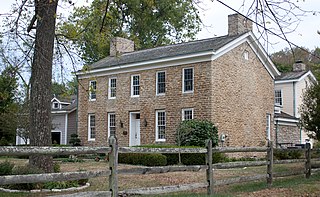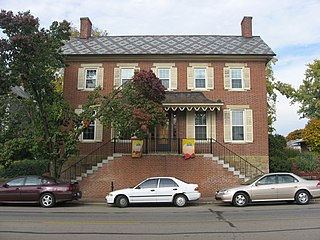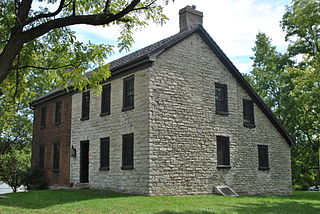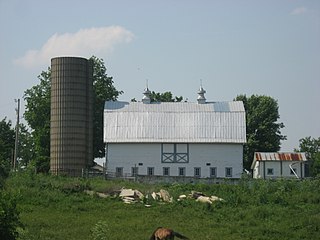
Marsh-Billings-Rockefeller National Historical Park is a United States National Historical Park in Woodstock, Vermont. The park preserves the site where Frederick Billings established a managed forest and a progressive dairy farm. The name honors Billings and the other owners of the property: George Perkins Marsh, Mary Montagu Billings French, Laurance Rockefeller, and Mary French Rockefeller. The Rockefellers transferred the property to the federal government in 1992. It is the only unit of the United States National Park System in Vermont.

The Charles Pinckney National Historic Site is a unit of the United States National Park Service, preserving a portion of Charles Pinckney's Snee Farm plantation and country retreat. The site is located at 1254 Long Point Road, Mount Pleasant, South Carolina. Pinckney (1757-1824) was a member of a prominent political family in South Carolina. He fought in the American Revolutionary War, was held for a period as prisoner in the North, and returned to the state in 1783. Pinckney served as a delegate to the constitutional convention where he contributed to drafting the United States Constitution.

The William Edwards Farmhouse is a historic residence near Cincinnati in the village of Newtown, Ohio, United States. One of the area's leading early farmhouses, it has been designated a historic site.

The Elliott House is a historic residence in the city of Indian Hill in northeastern Hamilton County, Ohio, United States. Constructed in 1802, this farmhouse once served as the hub of an industrial operation, and since that time it has been named a historic site.

Armstrong Chapel United Methodist Church is a historic church in the city of Indian Hill, Ohio, United States. Built in 1831, it is a small rectangular building with a prominent front tower. It was designated a historic site in 1975.

The Varner–Hogg Plantation State Historic Site is a historic site operated by the Texas Historical Commission. The site was the home of former Governor of Texas James S. Hogg and his family. The site is located outside West Columbia, in Brazoria County.

Menor's Ferry was a river ferry that crossed the Snake River near the present-day Moose, Wyoming, United States. The site was homesteaded by Bill Menor in 1892-94, choosing a location where the river flowed in a single channel, rather than the braided stream that characterizes its course in most of Jackson Hole. During the 1890s it was the only homestead west of the river. Menor's homestead included a five-room cabin, a barn, a store, sheds and an icehouse on 148 acres (60 ha), irrigated by a ditch from Cottonwood Creek and at times supplemented by water raised from the Snake River by a waterwheel. Menor operated the ferry until 1918, selling to Maude Noble, who continued operations until 1927, when a bridge was built at Moose.

The Watt–Groce–Fickhardt House is a historic house in Circleville, Ohio, United States. Located along Main Street on the city's eastern side, it is a distinctive landmark and has been named a historic site.

The Young-Shaw House was a historic farmhouse located near Sarahsville, Ohio, United States. A simple building originally home to a wealthy farmer, it was passed down through numerous generations of the original owner's family, and it has been named a historic site.

The Walter Curtis House is a historic residence in far southern Washington County, Ohio, United States. Located south of Little Hocking, a community in southern Belpre Township, the house is a two-story structure constructed in 1827. Built of brick with elements of stone, it was the home of local politician Walter Curtis. During the nineteenth century, Curtis held such offices as Washington County Commissioner, associate judge, and Ohio state representative; his son Austin was later also elected to the Ohio House of Representatives.

The Abner Williams Log House is a historic log cabin in the southeastern part of the U.S. state of Ohio. Located northeast of Lashley in Noble County, it was the home of one of the leading citizens of early Noble County.

The Samuel Danford Farm is a historic complex of buildings in northeastern Noble County, Ohio, United States. Located near the village of Summerfield, the complex comprises six buildings and one other site in an area of approximately 7.5 acres (3.0 ha).

Bennett Cockayne House is a historic home located at Glen Dale, Marshall County, West Virginia. It was built about 1850, in a vernacular I-house style. It is a two-story, wood-frame building with wooden clapboard siding and a slate roof. Also on the property are a contributing supply shed and water pump. It was listed on the National Register of Historic Places in 2002.

St. Henry's Catholic Church is a historic Catholic parish in the rural community of Harriettsville in the southeastern part of the U.S. state of Ohio. Established for German settlers in the 1860s, it worships in a landmark church building constructed in the 1890s. As the only stone building in the area and the work of a prominent architect, it has been named a historic site.

The Overmyer–Waggoner–Roush Farm is a historic farmstead on the southern edge of the village of Lindsey in the northwestern part of the U.S. state of Ohio. Composed primarily of buildings constructed in the middle of the nineteenth century, it has been converted into a park and designated a historic site.

The Lewis Kemp House is a historic pioneer farmstead in the city of Dayton, Ohio, United States. Built for one of the area's earliest residents, it was a religious center in its first years, while later years saw its expansion to its present form. Now located among much newer houses, it is Dayton's oldest surviving residence, and it has been named a historic site.

Whitehall Farm is a historic farmstead near the village of Yellow Springs in Greene County, Ohio, United States. Deemed a premier piece of architecture by the late nineteenth century, it has been named a historic site.

The McDonald Farm is a historic agricultural complex near the city of Xenia in Greene County, Ohio, United States. It has been named a historic site, largely because of a quarry on the farm, which supplied stone for the Washington Monument.

The Gill–Morris Farm is a historic farmstead near the city of Circleville in Pickaway County, Ohio, United States. Established in the early nineteenth century, it has been named a historic site.

The Crittenden Farm is a historic farm-and-ranch complex in far northern Ashland County, Ohio, United States. Once home to an internationally prominent sheep farmer, the complex includes some of the region's most distinctive agricultural architecture as well as scattered pieces of land that have seen almost no changes since the area was first settled. It has been named a historic site because of its place in the area's history.























